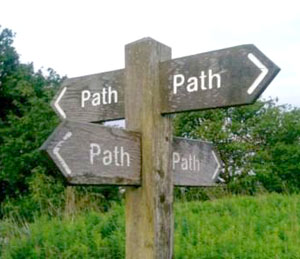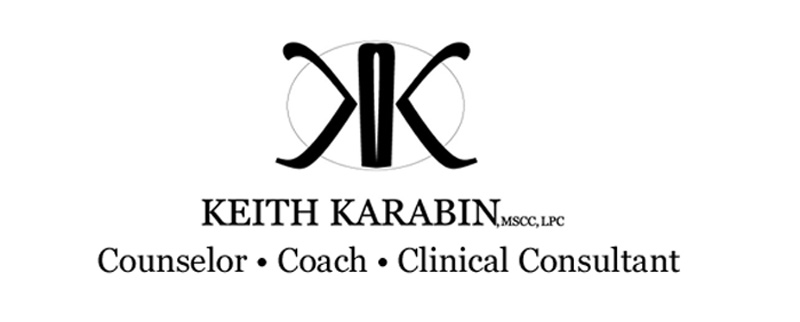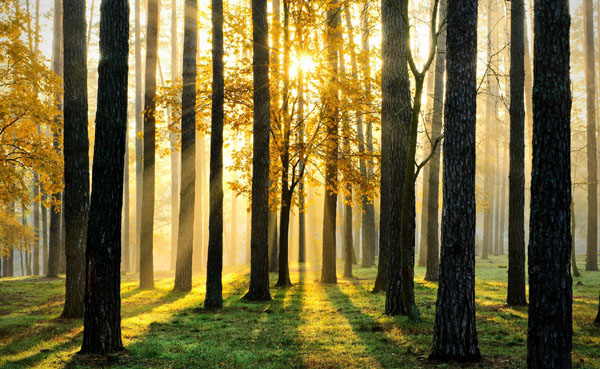Ecotherapy: The New, Ancient Path to Wellness in Wilderness
This should be “… of enormous interest for everyone concerned with the future of our species – environmentalists and legislators, industrialists and educators, you and me. Its message should become part of Western thought.”
– Jane Goodal, Anthropologist, On the subject of Ecopsychology
Let’s imagine ourselves smelling the sweet loam of a green forest. Feeling the cool touch of sun-dappled shade through a tall canopy of leaves. Hearing an occasional bird, the breeze in branches, hearing…our own thoughts once again. Hearing ourselves.
Now imagine this were guided therapy.
Because it is.
Just recently in The Outdoor Restore we published highlights of past articles which span the life of this website, bringing fresh light on some of the best research on how spending time in nature has calming emotional benefits, clarifies mental processes and can even heal our bodies.
All that nature data was like wind on the ocean; powerful and pleasant but it could be more productive. Ecotherapy is the science of the sail; it uses that data in partnership with nature to help thousands of people worldwide. “In its most basic sense,” said psychotherapist Martin Jordan, Senior Lecturer in Counselling and Psychotherapy at the University of Brighton, “ecotherapy is about the healing and psychological benefits of being in nature and natural settings” and it is becoming more vital every day (2009).
“The idea is that our modern transportation, climate-controlled homes and screen-based entertainment have created a major disconnect between humans and the natural world,” reported author Stephanie Watson (2009) on eco-psychology, a related field blending ecology and psychology. As a result of that disconnect, she said, “people are worrying themselves sick — literally — over the looming threat of environmental doom.”
 “Particularly for those of us trapped in the cubicle life” since the U.S. Environmental Protection Agency found in 2001 that the average American spends 87 percent of their time indoors and 6 percent in an enclosed vehicle (Kim, 2016). That’s 7% of our time spent outdoors, and the study also notes that some of the 7% is time outside running errands. Since natural time is a stress reliever this pattern seems to contribute to becoming an over-stressed, disconnected culture that is out of balance with the world around it. Yet the solution is right outside our door, streaming in the office windows, invitingly warming our cubicles.
“Particularly for those of us trapped in the cubicle life” since the U.S. Environmental Protection Agency found in 2001 that the average American spends 87 percent of their time indoors and 6 percent in an enclosed vehicle (Kim, 2016). That’s 7% of our time spent outdoors, and the study also notes that some of the 7% is time outside running errands. Since natural time is a stress reliever this pattern seems to contribute to becoming an over-stressed, disconnected culture that is out of balance with the world around it. Yet the solution is right outside our door, streaming in the office windows, invitingly warming our cubicles.
Some people may not be worried sick about “environmental doom” and may just seek a walk in the woods to bring clarity, fulfillment, solution or growth through Ecotherapy. Some may actually bring deep clinical issues with them to the forest for healing. Regardless, those that have experienced Ecotherapy’s myriad expressions find the practice life changing and sustaining.
Powered by ‘the Love of Life’
“The manifold ways by which human beings are tied to the remainder of life is poorly understood. The term biophilia may do well in drawing attention to psychological phenomena that rose from deep history, that stemmed from interaction with the natural environment, and are now likely to reside in the genes themselves.”
– Stephen Kellert, Yale Social Ecologist
Present day Ecotherapy has many facets and foci, some call it Green Therapy, some call it Forest Therapy, Eco-psychology is linked to it as well. These distinctions may solely be from the outside, as—at  its core—each methodology shares the same root; that humans have an innate desire for connection to the natural world and in our modern distraction we have under prioritized the beneficial fulfilment of that connection.
its core—each methodology shares the same root; that humans have an innate desire for connection to the natural world and in our modern distraction we have under prioritized the beneficial fulfilment of that connection.
Over twenty years ago Howard Clinebell, one of the pioneers of the modern field, explained this connection in Ecotherapy as a relationship that “encompasses both nature’s ability to nurture us, through our contact with natural places and spaces, and our ability to reciprocate this healing connection through our ability to nurture nature.” We are nurtured by nature, nature nurtures us. Like any relationship, it’s a two-way street.
The therapeutic relationship (normally between the therapist and client) is widely regarded as the key to successful therapy. In Ecotherapy the natural environment is welcomed into that dynamic as both the cathartic setting and—in a sense—a participant. It could be seen like reconnecting with that old friend we lost touch with, or for some, had a bad breakup. There is a delicate balance between all of us and the natural world and “by working in a relational way with nature new internal landscapes start to emerge in interaction with external landscapes, which reflects, sustains, challenges and supports the person on their therapeutic journey” toward whatever fulfillment they seek.
To those who still wonder, “but how?” we look to the phenomena of biophilia referenced above by renowned author and social ecologist at Yale University, Stephen Kellert. Like how Franklin discovered electricity but Edison changed the world with it, Kellert researched and defined our connection to the natural world as simply “the love of life” or biophilia, which “suggests human identity and personal fulfilment somehow depend on our relationship with nature, and that the human need for nature is linked not just to the material exploitation of the environment but also to the influence the natural world has on our emotional, cognitive, aesthetic, and even spiritual development (Jordan, 2009).”
Like Edison, Ecotherapy is changing the world with “the love of life” and people are—not to put too fine a point on it—loving their life more, finding fulfillment and growing centered and calm as a result.
Choosing a Path
“I think about where yoga was 30 years ago and where it is today, and I realize that forest therapy is making the same journey toward cultural definition in a way that will mainstream the practice.”
– Ben Page, Certified Forest Therapy Guide
 Excited to get into to the forest and reconnect with our old friend? Great, that’s the point. As noted in other articles on this site, simply getting out there has marked health benefits, but as always, if you want the most improvement, seek a professional. There are literally over 25 years and piles of data on the value of these practices, and much of it comes from Japan and Forest Therapy Guides.
Excited to get into to the forest and reconnect with our old friend? Great, that’s the point. As noted in other articles on this site, simply getting out there has marked health benefits, but as always, if you want the most improvement, seek a professional. There are literally over 25 years and piles of data on the value of these practices, and much of it comes from Japan and Forest Therapy Guides.
Forest Therapy Guides practice Shinrin-Yoku or “Forest Bathing,” as it was first titled by the Japanese Ministry of Agriculture, Forestry and Fisheries in 1982. They lead groups or individuals devoted to “spending time in forested areas for the purpose of enhancing health, wellness, and happiness…bathing in the atmosphere of the forest….in a way that invites healing interactions.” The methods are more laid-back than classic therapy, using terms like “invitations” for their activities within sessions rather than “intervention” so much of the benefit data is based on being in the natural environment and soaking in the atmosphere. This means that any person participating in an ecotherapeutic practice occurring in nature not only reaps those benefits as well but is bolstered by it on their journey.
The Association of Nature and Forest Therapy Programs furthers the biophilia perspective, observing that “there is a long tradition of this in cultures throughout the world.” American Forest Bathing shares the same core principles as Shinrin-Yoku, also echoed in Ecotherapy. Thus each has the potential to provide benefits such as “improved mood and feelings of health and robustness,” reduced risk of anxiety, depression, heart disease, weight gain, and memory and concentration loss as well as an increase in energy, creativity, “anti-cancer proteins” and “the body’s disease fighting agents” (Association of Nature and Forest Therapy Programs, 2017).
 If seeking something more active in Ecotherapy then look for an Ecotherapist like Ariana Candell, LMFT, R-DMT, a leader in the field, university professor and founder of the Earthbody Institute. Ecotherapists incorporate Mindfulness informed processes to focus on a personal goal such as seeking a solution to a personal issue, clarity for a major transition, honoring a rite of passage, or simply being rejuvenated by or growing more comfortable with nature (Earthbody Institute, 2017).
If seeking something more active in Ecotherapy then look for an Ecotherapist like Ariana Candell, LMFT, R-DMT, a leader in the field, university professor and founder of the Earthbody Institute. Ecotherapists incorporate Mindfulness informed processes to focus on a personal goal such as seeking a solution to a personal issue, clarity for a major transition, honoring a rite of passage, or simply being rejuvenated by or growing more comfortable with nature (Earthbody Institute, 2017).
Even after the last twenty to thirty years the field of Ecotherapy is new, exciting and ever emerging, so finding a practitioner may be a journey in itself. “The American Psychological Association doesn’t have a formal position on eco-psychology, but says it’s keeping a close eye on the field” according to Watson, and “no formal training is required to become an eco-therapist,” she said “but you do need to be licensed as a therapist” (2009). I would also caution that there are certified and trained ecotherapists and Forest Therapy Guides, and those are the ones to seek out. More information on both can be found at the links for the Association of Nature and Forest Therapy Programs and Earthbody Institute below.
Certified Forest Therapy Guide Ben Page makes the analogy between Forest Therapy and Yoga above. I would make a similar comparison of Ecotherapy to Mindfulness and Eye Movement Desensitization and Reprocessing Therapy, as I am trained in both. When they began they were based in an observable and beneficial phenomena which was harnessed to help people. Though there were skeptics, the data was irrefutable, and the culture shifted as the thousands of people whose lives were changed grew every day. That shift may just be starting to occur this very day as every new research study—like ones in Japan studying why the forest atmosphere fosters increased disease and cancer fighting cells—and every person who returns to the urban world restored after an ecotherapy session proves the biophilial connection.
We return to the breeze on the beach. Early man didn’t yet understand why the wind filled his sails but that didn’t stop them from using it to bring humanity to new horizons. Once again with Ecotherapy, we stand on that beach, invited by nature to go on a new and wonderful adventure that is both outside ourselves and deeply within.
Let’s journey together.
__________________________________________________
Association of Nature and Forest Therapy Programs (2017) Science agrees nature is good for you. Retrieved from: http://www.natureandforesttherapy.org/the-science.html
Earthbody Institute (2017) Ecotherapy: The healing power of nature. Retrieved from: https://theearthbodyinstitute.com/ecotherapy/
Jordan, M. (2009) Back to Nature. Therapy Today. Retrieved from: http://www.ecotherapy.org.uk/files/ecotherapy/home/Therapy_today_article_on_ecotherapy.pdf
Kim, M. (2016) Forest bathing is latest fitness trend to hit U.S. Washington Post. Retrieved from: https://www.washingtonpost.com/news/to-your-health/wp/2016/05/17/forest-bathing-is-latest-fitness-trend-to-hit-u-s-where-yoga-was-30-years-ago/
Watson, S. (2009) “What’s an eco-therapist?” HowStuffWorks.com. Retrieved from: http://science.howstuffworks.com/environmental/green-science/eco-therapist.htm


